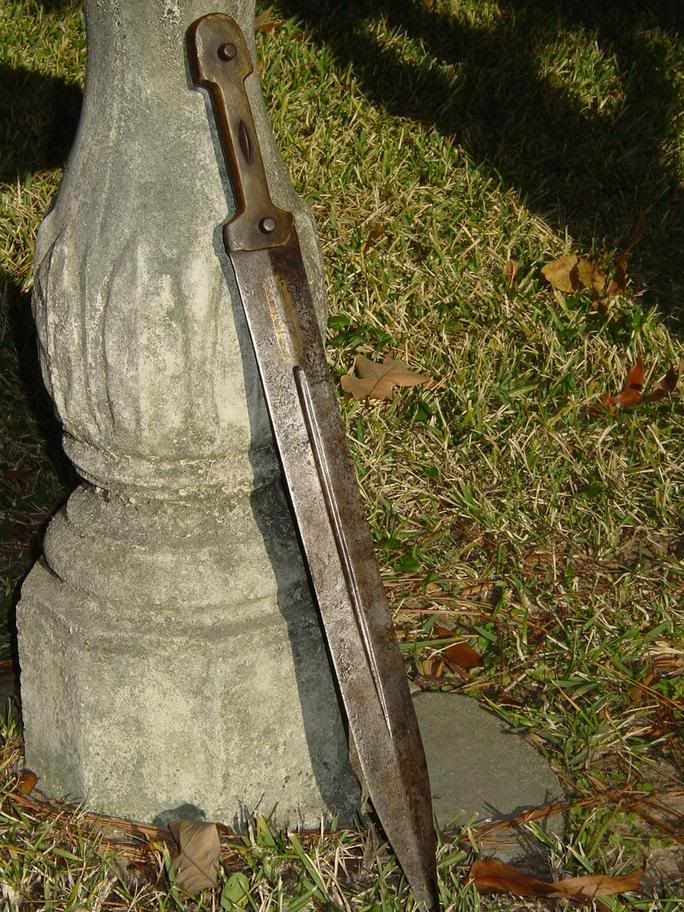
 |
|
|
|
|
#1 |
|
Member
Join Date: Dec 2004
Location: Ann Arbor, MI
Posts: 5,503
|
http://cgi.ebay.com/ws/eBayISAPI.dll...MEWA%3AIT&rd=1
A lot of money for a Wilkinson's fantasy sword! Most interesting, despite all the fuss about "extensive research", this is as far from a genuine early Arabian sword as it can get. The handle is very " Moresque" , ie early 2nd milennium North African/Andalusian variety. |
|
|

|
|
|
#2 |
|
Member
Join Date: Dec 2005
Posts: 164
|
I have a kinjal with some script on it,I posted a picture of the script on a translator forum and this is what the translation said(according to the translator)
"The sentence says: "la fata ella Ali (the first line), la sayf ella dhol-feqar". Its mean is: "No boy except 'Ali', no sword except 'dhol-feqar'". If you want explanation of it, here it is: 'Ali' is the name of 'Al-Imam Ali ibn Abi Talib (Karraml-lahu wajhahw)'. He is the cousin of the Prophet Muhammad (3alayhis-sallam). 'dhol-feqar' is the name of Imam Ali's sword. This sentence is said by Shi'a Muslims. " I thought it was interesting (funny thing I just found out about an hour ago after months of searching) Here is the Kinjal with the script 
|
|
|

|
|
|
#3 |
|
Member
Join Date: Apr 2005
Posts: 190
|
I think a little context is called for here:
The nearest English sense for the Arabic is There is no hero like 'Ali and no sword like Dhul-Faqar 'Ali was a near relative of the Prophet by both blood and marriage. He was chosen 4th Caliph, or successor to the Prophet, as ruler of Muslims. But the reason this passage appears so often on Islamic weapons is that 'Ali was known as the greatest Muslim warrior. He is revered for his strength and honor by all Muslims, and the saying is certainly not limited to Shi'a followers alone. The matter of the cloven tip of this most famous sword, given by the Prophet to 'Ali, has been discussed ad infinitum on this forum over the years. What may not have been addressed however, is the meaning of its name, Dhul Faqar. This has nothing to do with the tip of the blade, rather it means Posessor of Spines. Given the form of most early Arab blades (visible at Topkapi and elsewhere,) this name appears to refer to the central fullering and/or raised ribs visible on many of them. Sincerely, Ham |
|
|

|
|
|
#4 |
|
Member
Join Date: Dec 2005
Posts: 164
|
Thanks for clearing that up ham,
Ariel I agree with you it seems like a lot of money for a "fantasy" sword, I wonder if other fantasy sword that are limited editions go for that much? I like my old beat up Kindjal better |
|
|

|
|
|
#5 |
|
Member
Join Date: Nov 2005
Posts: 341
|
I remember seeing a ancient painting of the sword and it was shown as a curved blade with the snake tong point (forked)
|
|
|

|
|
|
#6 |
|
Member
Join Date: Oct 2005
Location: Paris (FR*) Cairo (EG)
Posts: 1,142
|
In Topkapi Palace, I saw a sample for that type of sword,
in Tunis souk also, it was a copy, funny here joined, a scan from my bibliotheque source; - Les Armes Orientales (Easten Weapons) by Iaroslav Lebedynsky http://www.vikingsword.com/vb/attach...tid=8831&stc=1 translation of French text: Zulficar (dhoû-l-faqâr) ottaman of XVIII century with flamed blades. Zulficar is a blade parallels scimitar evoking the legendary sabre of Ali. The use of such weapons to the combat is doubtful; some could be used as religious or military emblems. à + Dom |
|
|

|
 |
|
|